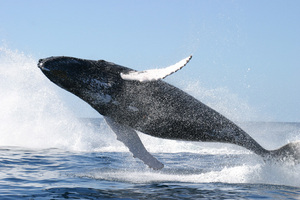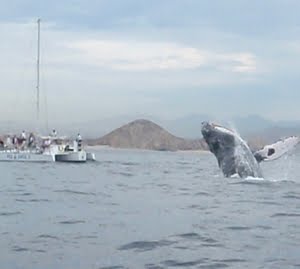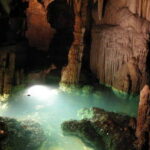The Humpback Whale is an amazing yet majestic giant whale, which is known as the Megaptera Novaeangliae species. People travel by boat to the warm coastal waters, in order to watch the whales as the play in their normal habitat. Many companies offer an experience of inexpensive whale watching for tour groups all over the world like: Princess Monterey Whale Watching and Whale One. People enjoy being able to get up close and personal to the whales, as they play within their own habitat.
How to identify a Humpback Whale?
Did you know that a Humpback Whale is a massive mammal which weighs about 40 tons and can grow to be up to 62 feet long? This whale has a distinct hump on its back and they have largest flippers of every other animal in the sea. This majestic whale is the fifth largest mammal in the ocean and they have two blow holes, instead of one like most whales. Enchanted Learning (2012), the Humpback Whale can be four different colors, but their fluke will always have patches of white on it.
What make the whale distinct?
The white markings on their fluke helps researchers identify each whale, because it is like an individual human’s fingerprint. No two whales have the same markings on their fluke, which is amazing and helps researchers indentify new whales that they can study. Furthermore, each whale has distinct throat groves that can be seen from a distance. These throat grooves allow the whales mouth to expand while eating it prey.
What do they eat?
The Humpback Whale is called baleen whales, because they have several hundred baleen plates that hang from their upper jaw instead of teeth. The whale swallows several thousands of gallons of water which allows them to catch small fish, plankton, and krill. The baleen plates in their upper jaw allow them to catch the prey while filtering out the water. According to Enchanted Learning (2012), the whale will migrate to colder waters, in order to eat the tons of food it takes to fill them up.
Where do they live?
The Humpback whale prefers to live in a large group or pod of whales, which may be mother and calf or other whales that are relatives. The young calves drink the mother’s milk, after they are born until the mom begins to wean the baby whale at 11 months old. According to Enchanted Learning (2012), a female Humpback Whale is generally pregnant for around 12 months and she will feed the calf 100 lbs of milk a day.
What is a Whale Song?
The Humpback male will make a long yet complex set of noise like: moaning, crying, and howls for several hours. This has been come to known as a Whale Song, which is used to communicate with other whales that are swimming in the area or several miles away. According to National Geographic (2012), this species of whale is well-known for making beautiful and magical noise. This communication between the Humpback Whales has been recorded by researchers and can be found online.
How long does it take the calf to grow?
The family of whales prefers to remain near the surface, whether they are in the open waters of the ocean or swimming near the shoreline. These whales share a strong bond, so the calf will follow its mother to wherever she decides to migrate too. According to Marine Park (2012), the baby calf will not stop growing until he is about ten years old, but by then the calf will be fully grown. The fully grown calves will generally stay near their mother and other relatives in the pod.
Why are they called acrobats of the sea?
The Humpback Whales enjoys breeching the surface of the water, just to show off or play. However, they usually arch its back right before it dives back in the ocean. According to Enchanted Learning (2012), are considered to be acrobats of the ocean because they love to surface and slap the water with the huge fins. Sometimes they will even breech the water right near a fishing vessel or a boat, which amazes the people on board.
Are they threatened?
These whales were heavily hunted for their oil, meat, whalebones by many types of whale hunters over the past years. This is causing the Humpback Whale to become a threatened and endangered species, which is sad. According to Marine Park (2012), whale hunting was banned from 1963 until 2007. However, now the Japanese has approved hunting and killing a certain amount of whales for scientific research.
References:
National Geographic (2012) Humpback Whale
Retrieved on November 14, 2012 from the World Wide Web
http://animals.nationalgeographic.com/animals/mammals/humpback-whale/
Enchanted Learning (2012) Humpback Whale
Retrieved on November 14, 2012 from the World Wide Web
http://www.enchantedlearning.com/subjects/whales/species/Humpbackwhale.shtml
Marine Park (2012) Humpback Whale
Retrieved on November 14, 2012 from the World Wide Web
http://www.marineparks.wa.gov.au/fun-facts/37-humpback-whale.html







